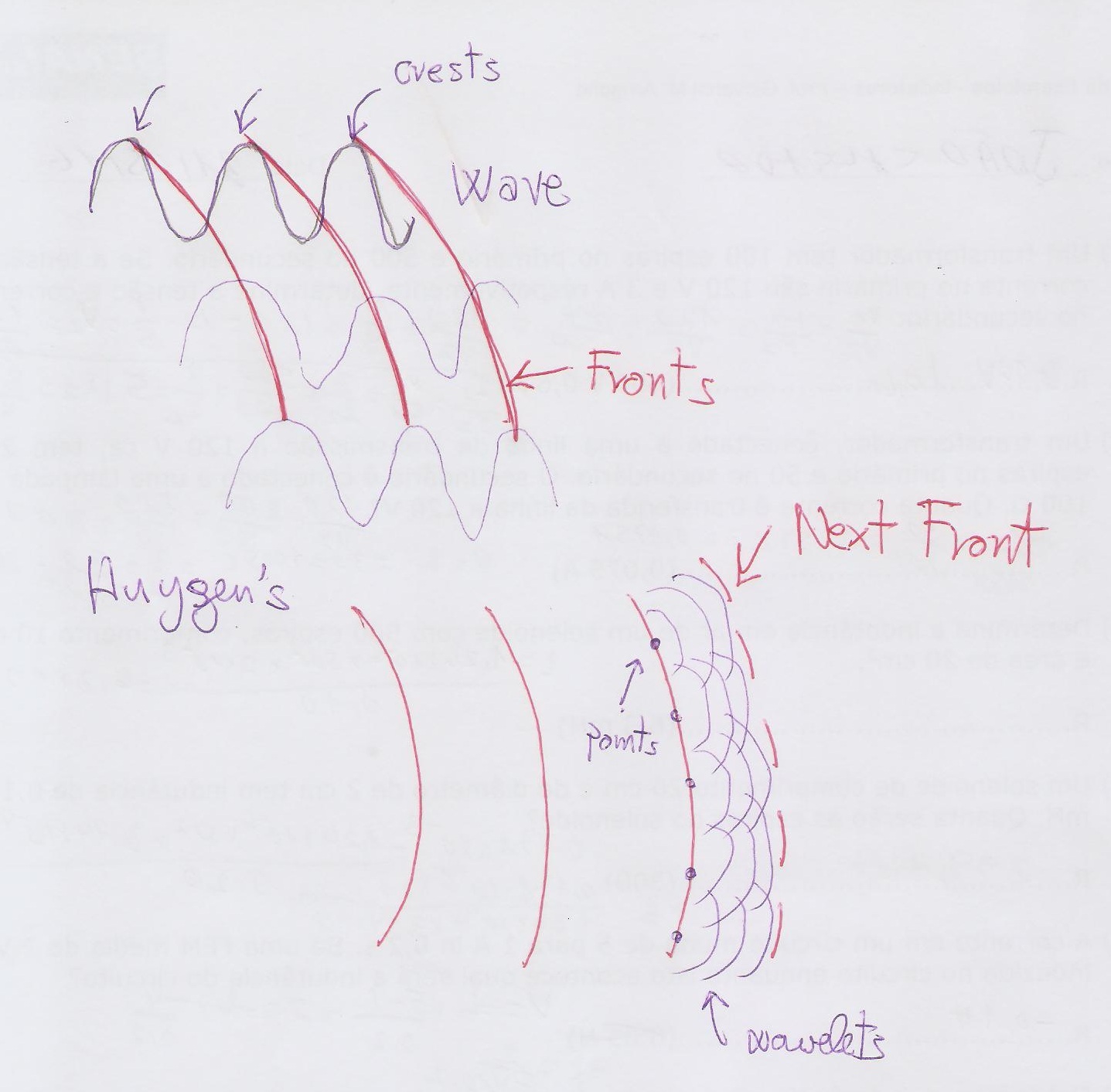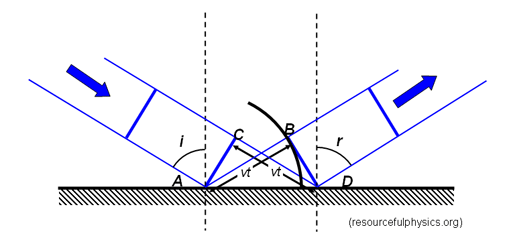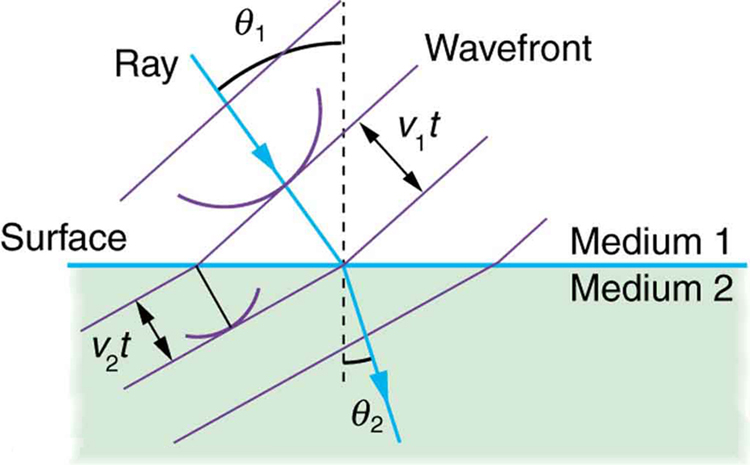The phenomena of reflection and refraction of light are explained by which nature of light?
1 Answer
I would say by its wave-like nature.
Explanation:
These two phenomena can be understood using Huygens’s Principle of Wavelets formation.
Huygens tells us that light is formed by fronts (consider them as the crests of the wave) that propagates through a medium with a certain speed (typical of that medium). Each point on a front is source of secondary wavelets whose envelope forms the next front!!!
It seems difficult but consider this:

But this is very good because when light meets the boundary between two media both continues inside the same medium (reflection) and penetrates into the second where the speed of the wave is different so that the envelopes of wavelets forming the next front will change causing a change in direction (refraction)!!!
So in reflection (same medium and so same speed) secondary wavelets will have the same radius and produce a new front with direction at the same angle of the incident one (going away from the boundary):

In refraction the secondary wavelets will form gradually as the wave penetrates the second medium producing a "distortion" of the envelope-formed new front:

Hope it is not too confusing! Remember that Huygens' Principle is a kind of mathematica way of describing waves...it works BUT in theory you should use Maxwell Equations that are Physically sound but....very difficult and at the end they give you the same result!!!

